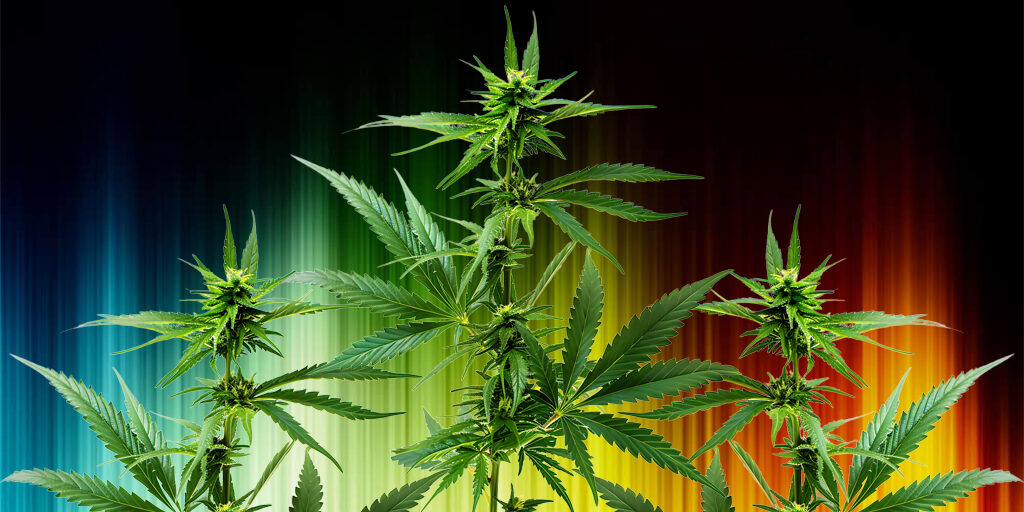Cannabis is a complex plant that contains hundreds of chemical compounds, including cannabinoids, terpenes, and flavonoids, all of which contribute to its unique effects and characteristics. Among the various cannabis products available today, full-spectrum products have gained considerable attention for their ability to provide a more holistic cannabis experience. But what exactly are full-spectrum cannabis products, and why are they becoming so popular? This article delves into the science behind full-spectrum products, how they differ from other types of cannabis extracts, and why they matter for cannabis enthusiasts.
Understanding Full-Spectrum Cannabis
At its core, the term “full-spectrum” refers to products that retain a wide array of the plant’s naturally occurring compounds. Unlike isolated or broad-spectrum extracts, full-spectrum cannabis products aim to capture the full profile of cannabinoids, terpenes, and other beneficial compounds found in the plant. This holistic approach is rooted in the belief that these compounds work together synergistically, a phenomenon known as the “entourage effect.”
The Entourage Effect
The entourage effect is a term used to describe the way in which cannabinoids, terpenes, and flavonoids interact to enhance each other’s effects. For example, the presence of terpenes in a full-spectrum product may modify the effects of THC or CBD, creating a more balanced and nuanced experience. This synergy is why many cannabis connoisseurs and researchers advocate for full-spectrum products over isolates or single-compound formulations.
The Components of Full-Spectrum Cannabis Products
 Full-spectrum cannabis products are celebrated for their richness in natural compounds. Here are the primary components that make these products stand out:
Full-spectrum cannabis products are celebrated for their richness in natural compounds. Here are the primary components that make these products stand out:
1. Cannabinoids
Cannabinoids are the active chemical compounds in cannabis that interact with the body’s endocannabinoid system. Full-spectrum products typically contain a mix of major and minor cannabinoids, including:
-
- THC (Tetrahydrocannabinol): The psychoactive compound responsible for the “high” associated with cannabis.
- CBD (Cannabidiol): A non-psychoactive compound known for its calming and balancing properties.
- CBG (Cannabigerol): Often called the “mother of all cannabinoids,” as it is a precursor to THC and CBD.
- CBC (Cannabichromene): A lesser-known cannabinoid believed to contribute to the entourage effect.
2. Terpenes
Terpenes are aromatic compounds found in cannabis and many other plants. They contribute to the plant’s scent, flavor, and effects. Common terpenes in full-spectrum products include:
- Myrcene: Known for its earthy, musky aroma, often associated with relaxing effects.
- Limonene: A citrusy terpene that may promote an uplifting and energizing experience.
- Pinene: Found in pine needles, this terpene is believed to support alertness and focus.
3. Flavonoids
Flavonoids are lesser-known compounds that also contribute to the plant’s flavor and aroma. They may play a role in the entourage effect and offer additional complexity to full-spectrum products.
How Are Full-Spectrum Products Made?
The process of creating full-spectrum cannabis products is designed to preserve the plant’s natural profile. Here’s a brief overview of the steps involved:
1. Harvesting High-Quality Cannabis
The quality of the cannabis plant itself is crucial. Cultivators select strains rich in a diverse array of cannabinoids and terpenes to create high-quality full-spectrum products.
2. Extraction
Extraction methods are carefully chosen to retain as much of the plant’s natural chemistry as possible. Popular methods include:
- CO2 Extraction: A solvent-free process that uses pressurized carbon dioxide to extract cannabinoids and terpenes.
- Ethanol Extraction: A method that uses ethanol as a solvent to pull out a wide range of compounds from the plant.
- Hydrocarbon Extraction: Often used to create concentrates, this method employs hydrocarbons like butane or propane to extract cannabinoids and terpenes.
3. Minimal Processing
Once extracted, the oil is minimally processed to preserve its full-spectrum profile. This contrasts with isolates or distillates, which undergo additional refinement to remove specific compounds.
Full-Spectrum vs. Broad-Spectrum vs. Isolates
 Understanding the differences between full-spectrum, broad-spectrum, and isolate products is key to choosing the right product for your needs.
Understanding the differences between full-spectrum, broad-spectrum, and isolate products is key to choosing the right product for your needs.
Full-Spectrum
- Contains all cannabinoids, terpenes, and other compounds, including trace amounts of THC.
- Provides the full entourage effect.
Broad-Spectrum
- Similar to full-spectrum but with THC removed.
- Offers some entourage effect without the psychoactive properties of THC.
Isolates
- Contain only one specific cannabinoid, such as pure CBD or THC.
- Lack the entourage effect but can be useful for targeted purposes.
Types of Full-Spectrum Products
Full-spectrum cannabis is available in various forms, catering to different preferences and consumption methods:
1. Full-Spectrum Oils and Tinctures
These are among the most popular full-spectrum products, offering a versatile way to consume cannabis. They can be taken sublingually, added to food, or used in beverages.
2. Full-Spectrum Edibles
Edibles made with full-spectrum extracts provide a flavorful and discreet option for consuming cannabis. From gummies to baked goods, these products allow users to enjoy the benefits of full-spectrum cannabis in a tasty format.
3. Full-Spectrum Concentrates
For experienced consumers, concentrates like shatter, wax, or live resin offer potent options that retain the plant’s full profile.
4. Full-Spectrum Topicals
Lotions, balms, and creams infused with full-spectrum cannabis are popular for localized application.
Benefits of Full-Spectrum Products
While full-spectrum products are not inherently “better” than other types of cannabis products, they do offer distinct advantages for certain users:
- Enhanced Flavor and Aroma: The presence of terpenes and flavonoids provides a richer sensory experience.
- Balanced Effects: The entourage effect can create a more nuanced and tailored experience.
- Diverse Options: Full-spectrum products are available in a wide variety of formats, making them accessible to different preferences.
Choosing the Right Full-Spectrum Product
 With so many options on the market, selecting the right full-spectrum product can feel overwhelming. Here are some tips:
With so many options on the market, selecting the right full-spectrum product can feel overwhelming. Here are some tips:
1. Check the Lab Results
Reputable brands provide third-party lab results that detail the cannabinoid and terpene profiles of their products. This transparency ensures you know what you’re getting.
2. Understand Your Goals
Think about what you’re looking to achieve with cannabis. Whether you’re interested in relaxation, focus, or creativity, there’s likely a full-spectrum product suited to your needs.
3. Choose a Trusted Brand
Look for brands known for their commitment to quality and consistency. Reading reviews and seeking recommendations can help you find reliable options.
Final Thoughts
Full-spectrum cannabis products represent a holistic approach to cannabis consumption, emphasizing the plant’s natural synergy. By preserving a wide array of cannabinoids, terpenes, and flavonoids, these products offer a rich and balanced experience that appeals to both novice and seasoned consumers. Whether you’re exploring oils, edibles, or concentrates, full-spectrum products showcase the true complexity and potential of cannabis. As the industry continues to evolve, full-spectrum cannabis is likely to remain a cornerstone of innovation and consumer choice.

